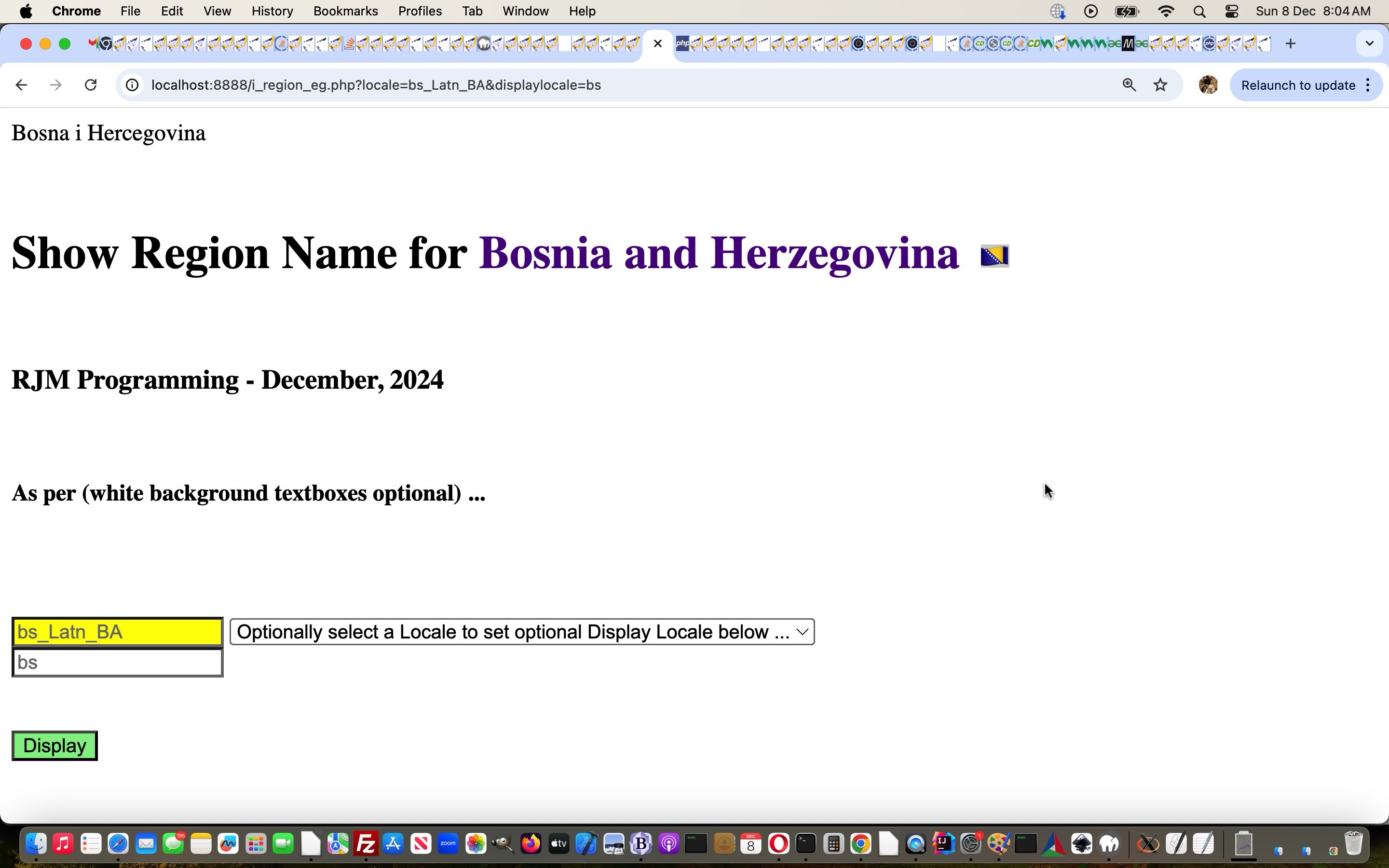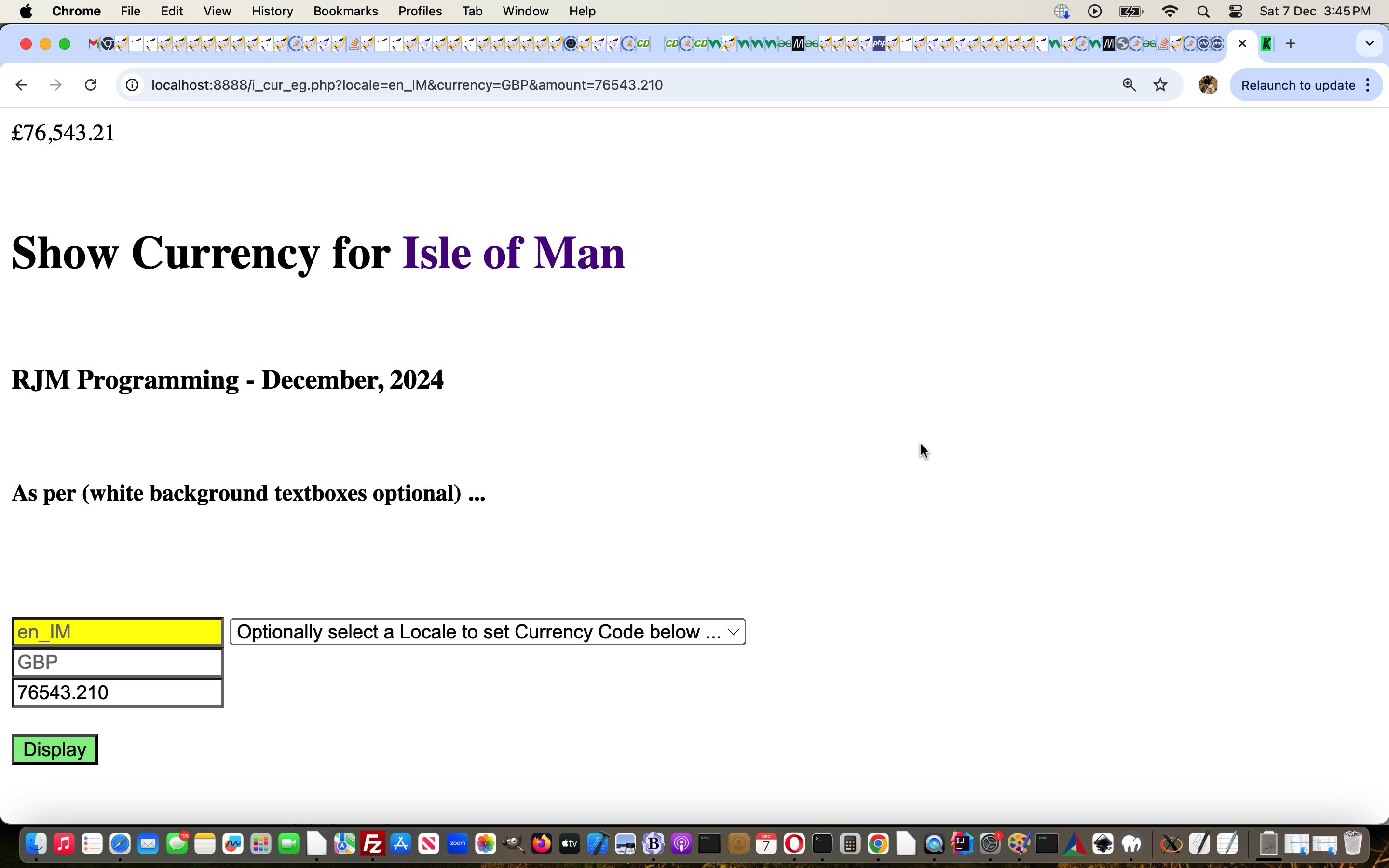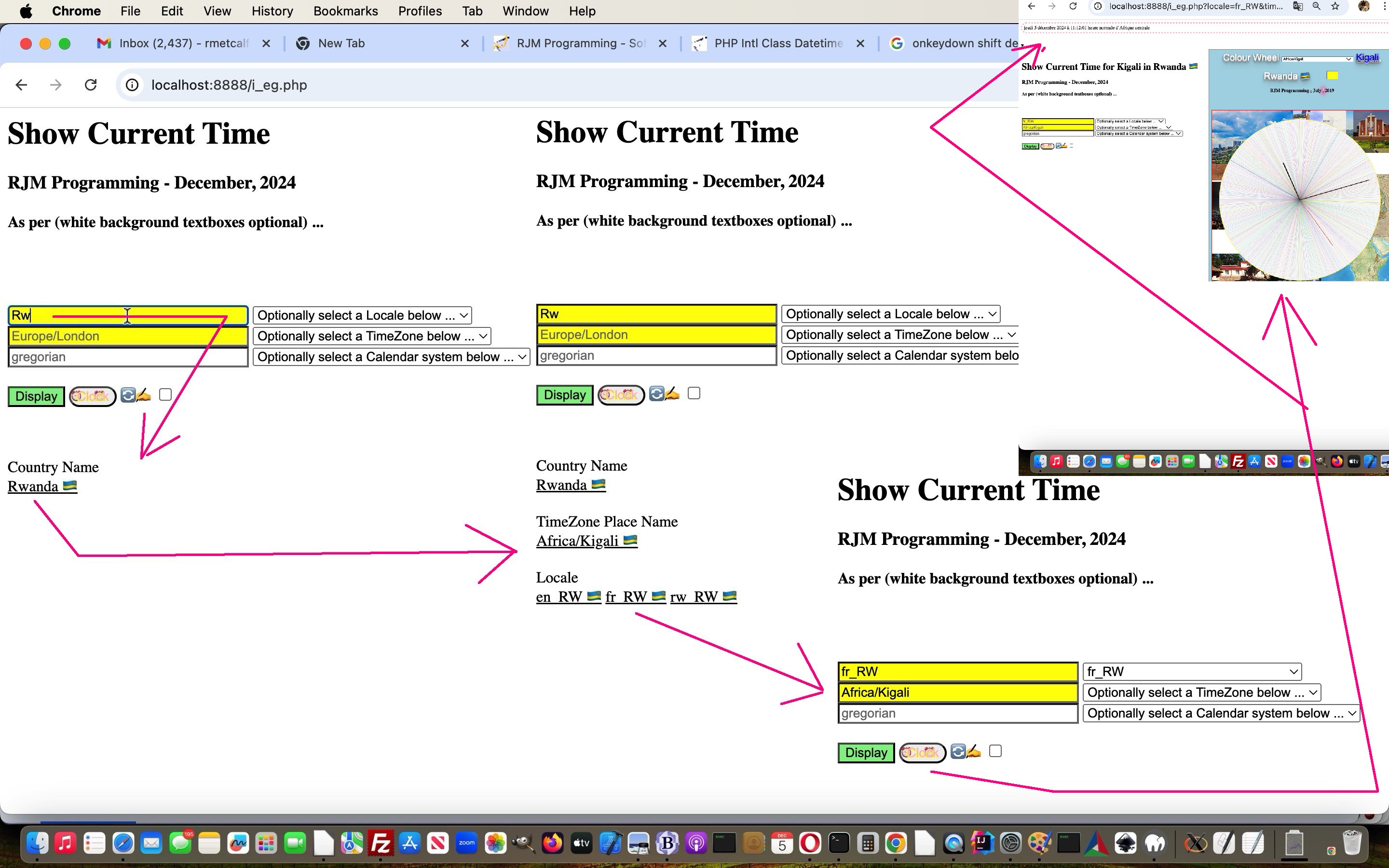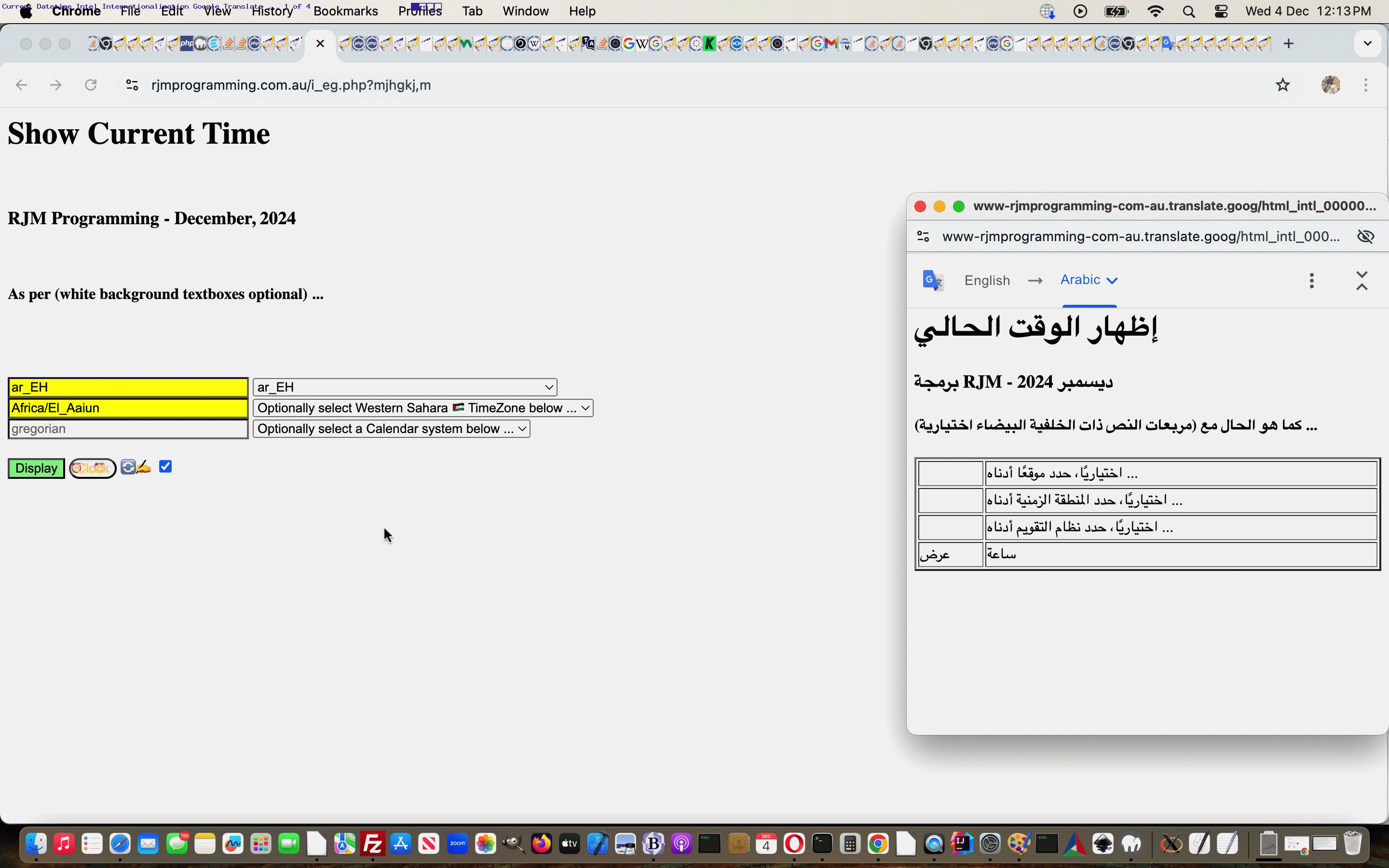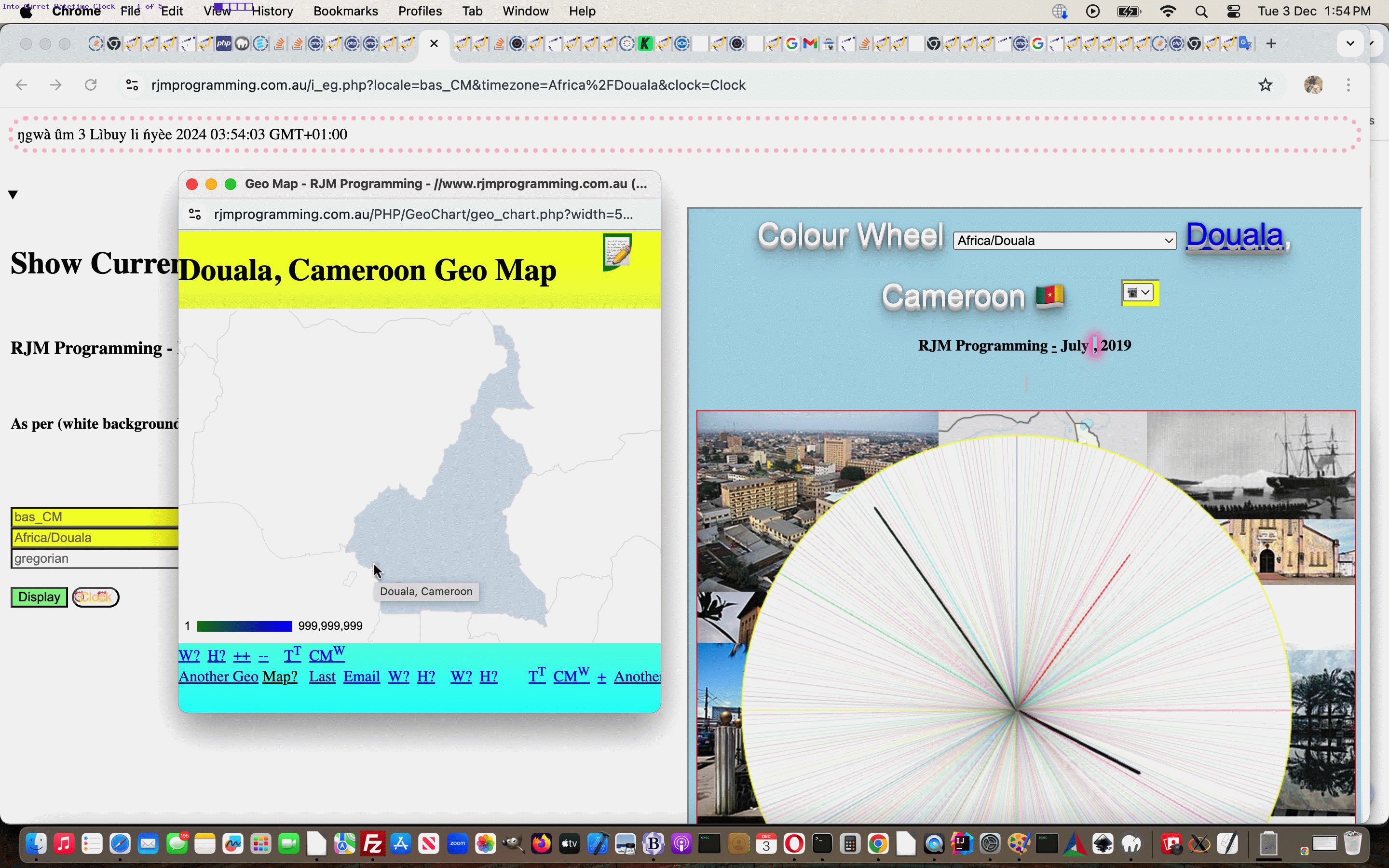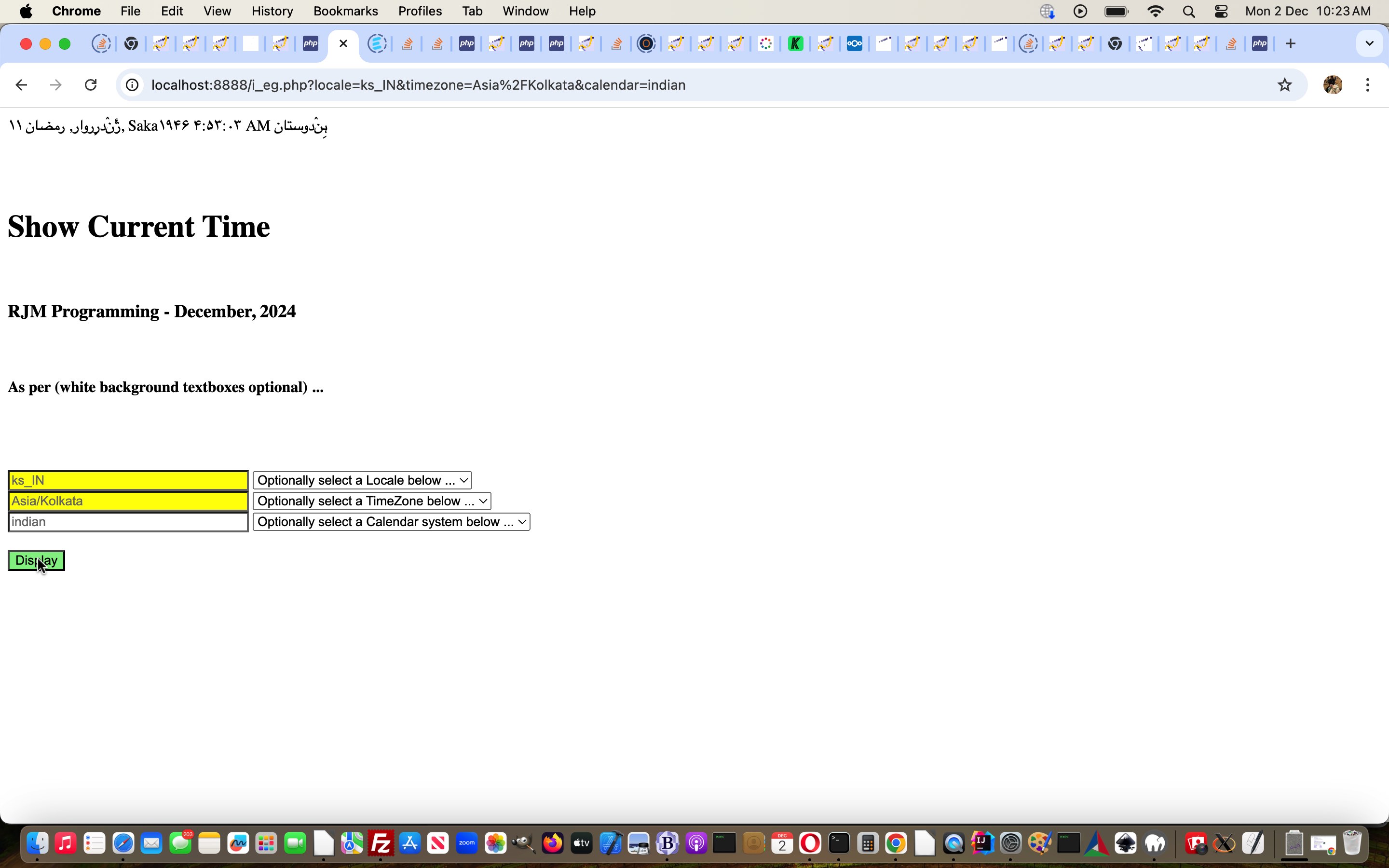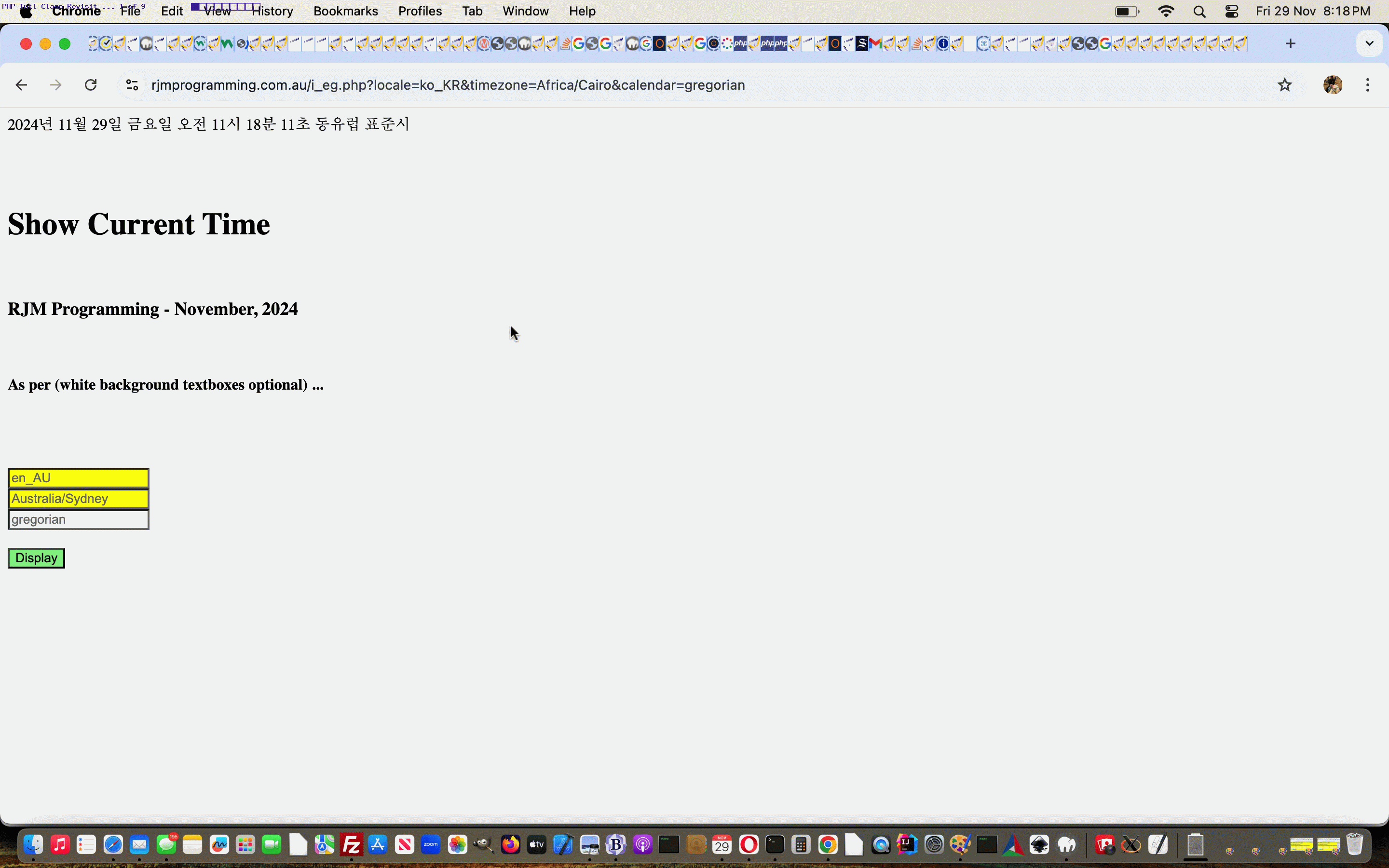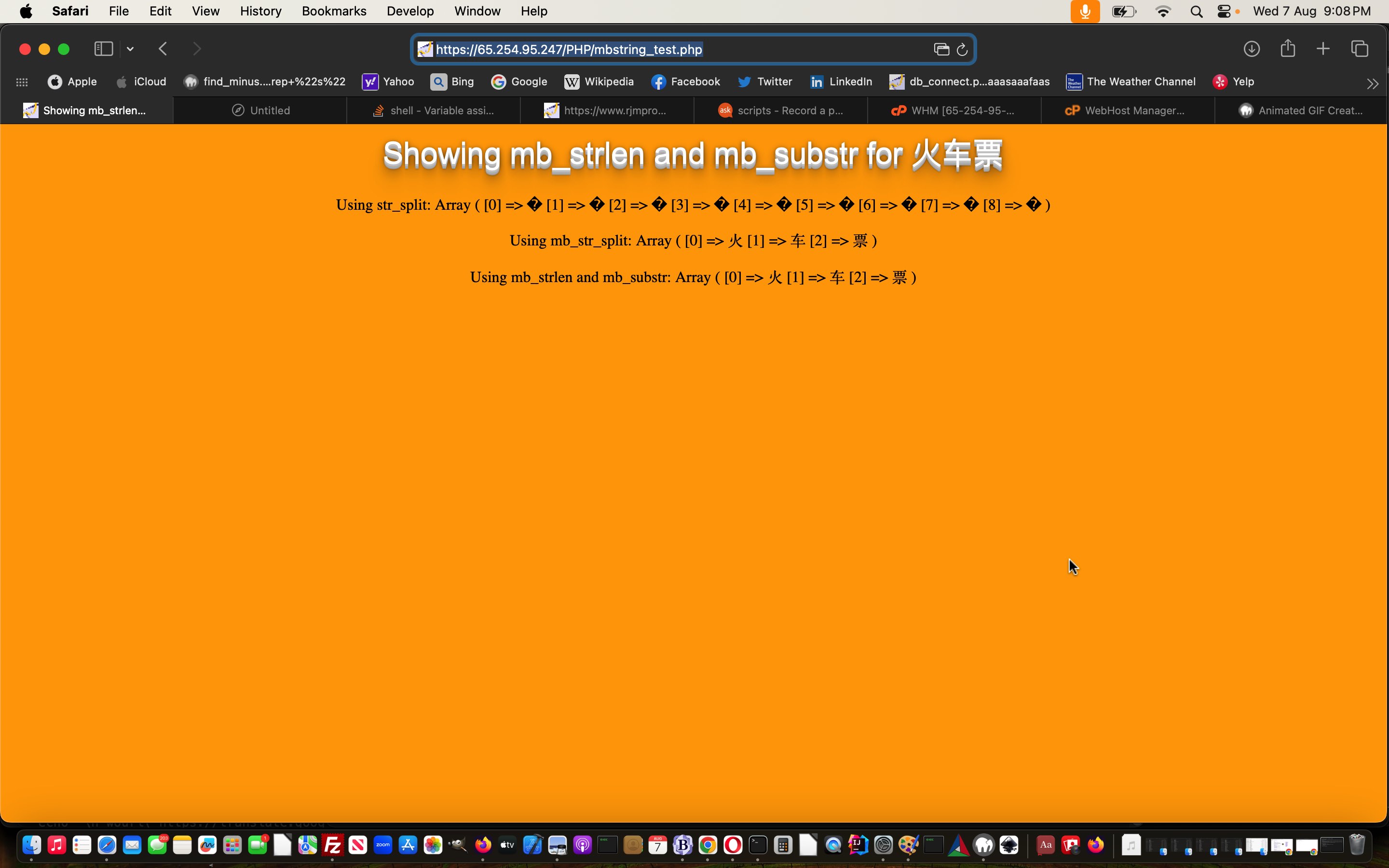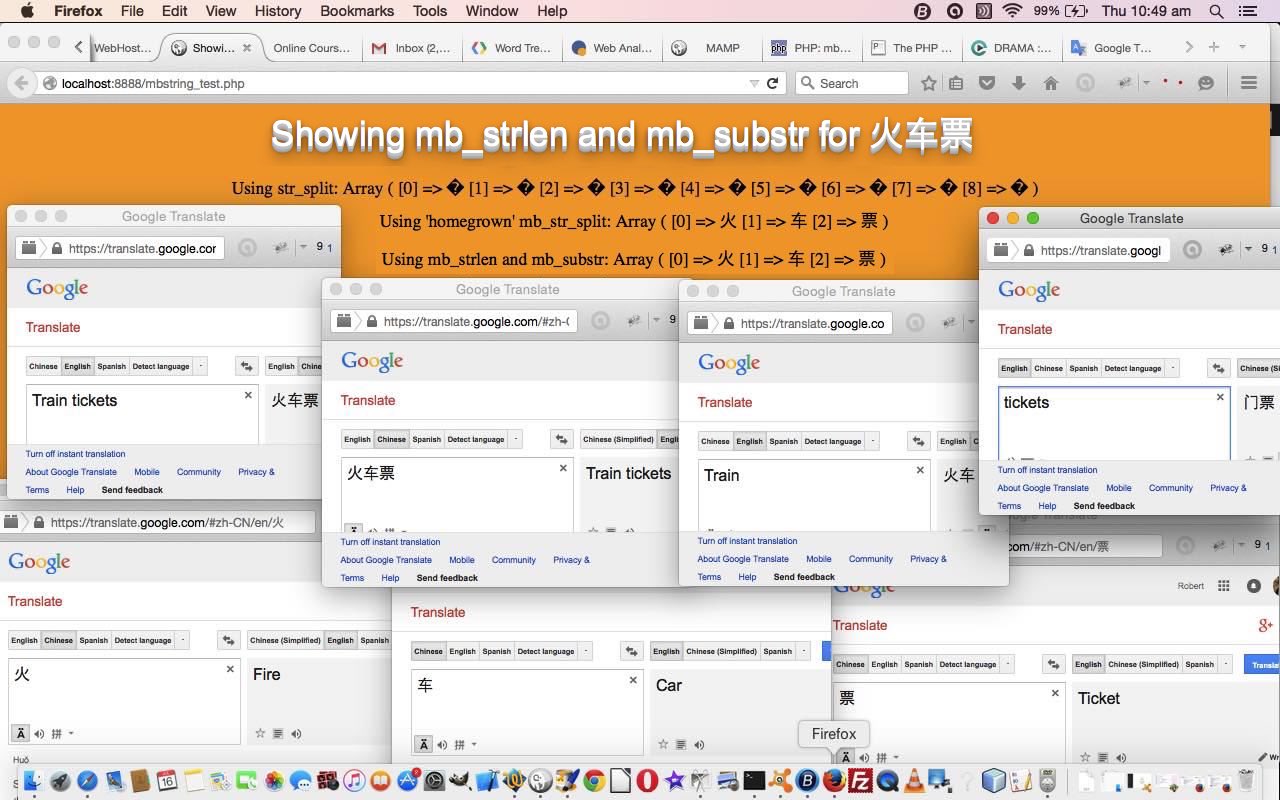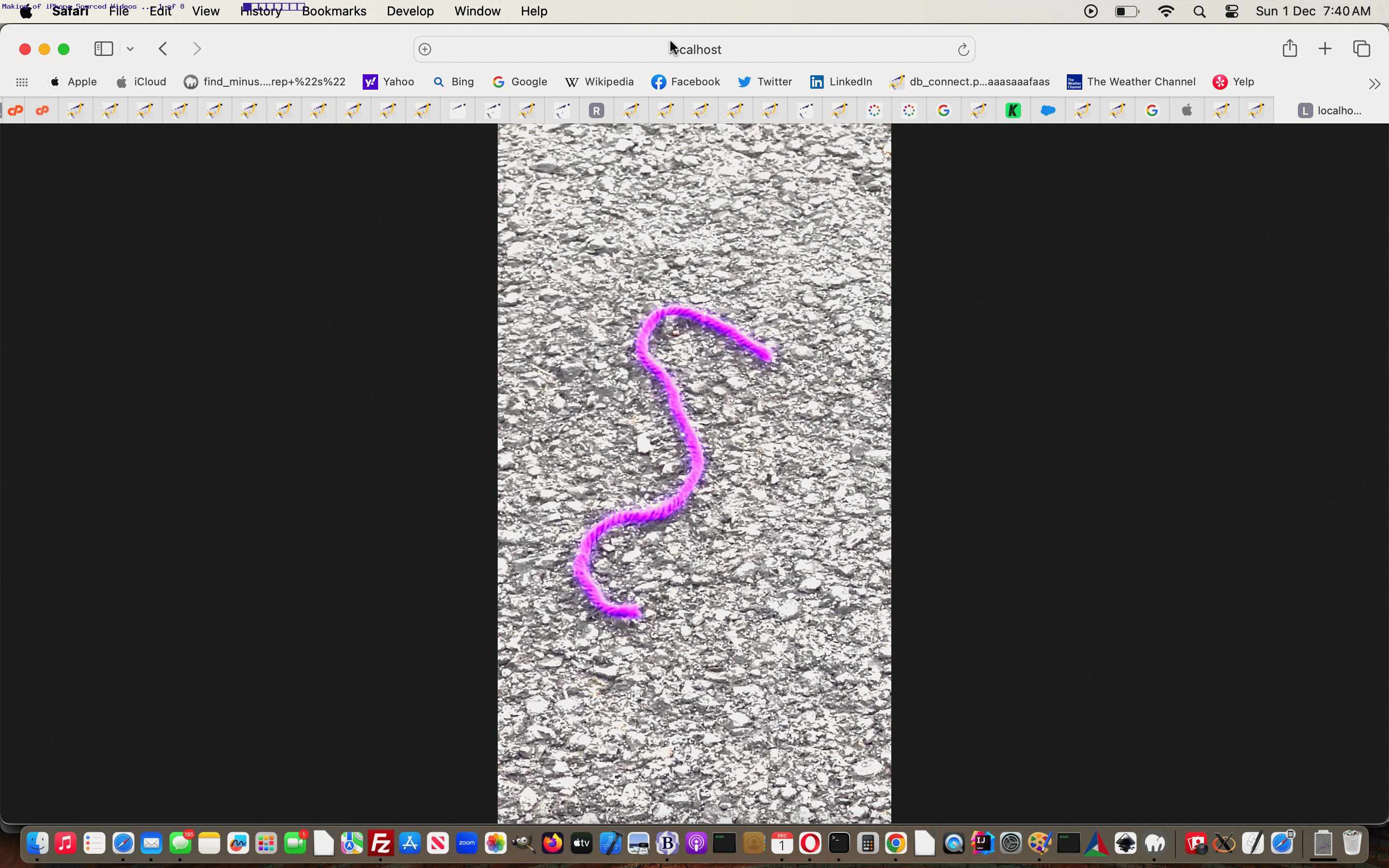Apart from Ghostbusters who do you turn to when you want to know what a resident of a region calls their region?
Still, Ghostbusters, you must be pulling my leg?!
Anyway, further to yesterday’s PHP Intl Class Currency Primer Tutorial, we’ve turned to good ol’ PHP.net, as usual (when it comes to many matters PHP).
In amongst all the ISO code usage we seek when interfacing to the PHP intl “Internationalization” class, because they are definitive, even so, we feel we need to allow users to enter Country Names, as one concept, especially as Country Names have been there before any ISO codes even started. The trouble with Country Names is twofold …
- it is not a reliable indexer, if you get my drift, because there are lots of forms, in any language you pick, for what a Country Name is
- at least for an English representation of a Country Name we’d like consistency, and, happily, the PHP intl “Internationalization” class can provide it
… via PHP code of the ilk …
<?php
echo "<p id=pdfmt>" . locale_get_display_region(urldecode($_GET['locale']), urldecode($_GET['displaylocale'])) . "</p><br>";
?>
As you might imagine, this discovery can have mildly wide ranging implications … well, you had to be there … on …
- a new “proof of concept” i_region_eg.php Region Names Internationalization web application … the crux of which filtering through to …
- a tweaked i_cur_eg.php Currency and Numbers Internationalization web application … and …
- a tweaked i_eg.php Datetime Internationalization web application
…PHP intl class suite of web applications we’re not letting Ghostbusters anywhere near!
Previous relevant PHP Intl Class Currency Primer Tutorial is shown below.
We’re back with the PHP intl “Internationalization” class, today, last talked about with the recent PHP Intl Class Datetime Keyboard Events Tutorial, this time discussing …
Currency Internationalization
… topics. Again, we found the Locale data item, as with Datetimes, the main data item of interest. But, any one Country can use more than one Currency (defined by an ISO-4217 3 letter Currency Code) in this new PHP Intl using Currency web application we’ve started developing today, and on a Locale selection we choose the first such one, and leave it open to the user to be able to type in their own ISO-4217 three letter Currency Code, as required.
We got great help from https://stackoverflow.com/questions/76825595/php-format-currency-issue with codeline ideas, such as …
<?php
$formatter = new NumberFormatter(urldecode($_GET['locale']), NumberFormatter::CURRENCY);
if (isset($_GET['amount'])) {
echo "<p id=pdfmt>" . $formatter->formatCurrency(urldecode($_GET['amount']), urldecode($_GET['currency'])) . "</p><br>";
} else {
echo "<p id=pdfmt>" . $formatter->formatCurrency(76543.210, urldecode($_GET['currency'])) . "</p><br>";
}
?>
The work of Datetimes, ahead of all this, has meant it is easier to get “further down the track” for today’s “proof of concept” i_cur_eg.php PHP code start, that has keyboard event and dropdown logics all in there, and which you can try below …
Previous relevant PHP Intl Class Datetime Keyboard Events Tutorial is shown below.
As far as “user interaction” goes with our Current Datetime PHP web application of PHP Intl Class Datetime Google Translate Tutorial we’ve been thinking …
- the user would be more likely to use the dropdown element selection methods … but supposing …
- the user uses the keyboard to enter Locale and/or Timezone
… and, as of yesterday’s logic, that would have been quite unwieldy, especially regarding timezone entries.
And so, today, we’ve added keyboard onkeydown and oninput event logics to cater for several scenarios we can “shortcut” those user requirements, often down to the entry of a couple or a few characters, and from there click appropriate created links in …
<?php echo ”
var morechanges=true;
var lastwo='';
var woi=null;
var oko=null;
var nlastokn='';
var xokn='';
var xlastconto=[];
var xmorechanges=true;
var xlastwo='';
var xwoi=null;
var xoko=null;
function precval(iois) {
//okn=iois.value;
oko=iois;
lastokn=okn;
}
function xprecval(iois) {
//okn=iois.value;
xoko=iois;
xlastokn=xokn;
}
function cval(eiois) {
//if (document.URL.indexOf('i0=') == -1) {
//if (eiois.which != 16) { alert('2:' + eiois.which); }
//okn+=String.fromCharCode(eiois.which || eiois.keyCode);
if ((eiois.which || eiois.keyCode) == 8) {
okn='';
} else if ((eiois.which || eiois.keyCode) == 186 || (eiois.which || eiois.keyCode) == 900000016) {
okn=okn.replace(':','') + ':';
//document.title=okn + ' ' + (eiois.which || eiois.keyCode);
var cvi=okn.split(':');
if (cvi.length > 1) {
var scs=0.0, factor=1.0;
for (var ij=eval(-1 + cvi.length); ij>=0; ij--) {
if (cvi[ij] == '') cvi[ij]='00';
scs+=eval(factor * eval(cvi[ij]));
factor*=60.0;
}
//alert(scs + ' ' + okn);
okn='' + scs;
oko.value=okn;
lastokn=okn.replace(':','');
//document.title=okn + ' ' + (eiois.which || eiois.keyCode) + ' ' + oko.value;
//setTimeout(fixval,30);
}
} else if ((eiois.which || eiois.keyCode) == 191) {
if (!eiois.shiftKey) {
okn+=String.fromCharCode(47);
//document.title='=1:' + okn + '+' + eiois.which + ' ' + eiois.keyCode + ' ... ';
}
if (eval('' + okn.length) > 1) { expandokn(); }
} else if ((eiois.which || eiois.keyCode) == 189) {
if (eiois.shiftKey) {
okn+=String.fromCharCode(95);
} else {
okn+=String.fromCharCode(45);
}
if (eval('' + okn.length) > 1) { expandokn(); }
//document.title='=1:' + okn + '+' + eiois.which + ' ' + eiois.keyCode + ' ... ';
} else if (eiois.keyCode == 189 || (eiois.which || eiois.keyCode) >= 65 && (eiois.which || eiois.keyCode) <= 90) {
if (eiois.shiftKey) {
okn+=String.fromCharCode(eiois.which || eiois.keyCode);
} else {
okn+=String.fromCharCode(eval(32 + eval(eiois.which || eiois.keyCode)));
}
//document.title='=1:' + okn + '+' + eiois.which + ' ' + eiois.keyCode + ' ... ';
if (eval('' + okn.length) > 1) { expandokn(); }
} else if ((eiois.which || eiois.keyCode) < 46 || (eiois.which || eiois.keyCode) > 58) {
okn=okn;
} else if (1 == 3) {
okn+=String.fromCharCode(eiois.which || eiois.keyCode);
document.title+='=1:' + okn + '+' + eiois.which + ' ' + eiois.keyCode + ' ... ';
}
//}
}
function xcval(eiois) {
//if (document.URL.indexOf('i0=') == -1) {
//if (eiois.which != 16) { alert('1:' + eiois.which); }
//xokn+=String.fromCharCode(eiois.which || eiois.keyCode);
if ((eiois.which || eiois.keyCode) == 8) {
xokn='';
} else if ((eiois.which || eiois.keyCode) == 186 || (eiois.which || eiois.keyCode) == 900000016) {
xokn=xokn.replace(':','') + ':';
//document.title=okn + ' ' + (eiois.which || eiois.keyCode);
var cvi=xokn.split(':');
if (cvi.length > 1) {
var scs=0.0, factor=1.0;
for (var ij=eval(-1 + cvi.length); ij>=0; ij--) {
if (cvi[ij] == '') cvi[ij]='00';
scs+=eval(factor * eval(cvi[ij]));
factor*=60.0;
}
//alert(scs + ' ' + okn);
xokn='' + scs;
xoko.value=xokn;
xlastokn=xokn.replace(':','');
//document.title=okn + ' ' + (eiois.which || eiois.keyCode) + ' ' + oko.value;
//setTimeout(fixval,30);
}
} else if ((eiois.which || eiois.keyCode) == 191) {
if (!eiois.shiftKey) {
xokn+=String.fromCharCode(47);
//document.title='=2:' + xokn + '+' + eiois.which + ' ' + eiois.keyCode + ' ... ';
}
if (eval('' + xokn.length) > 1) { expandxokn(); }
} else if ((eiois.which || eiois.keyCode) == 189) {
if (eiois.shiftKey) {
xokn+=String.fromCharCode(95);
} else {
xokn+=String.fromCharCode(45);
}
if (eval('' + xokn.length) > 1) { expandxokn(); }
//document.title='=2:' + xokn + '+' + eiois.which + ' ' + eiois.keyCode + ' ... ';
} else if (eiois.keyCode == 189 || (eiois.which || eiois.keyCode) >= 65 && (eiois.which || eiois.keyCode) <= 90) {
if (eiois.shiftKey) {
xokn+=String.fromCharCode(eiois.which || eiois.keyCode);
} else {
xokn+=String.fromCharCode(eval(32 + eval(eiois.which || eiois.keyCode)));
}
if (eval('' + xokn.length) > 1) { expandxokn(); }
//document.title='=2:' + xokn + '+' + eiois.which + ' ' + eiois.keyCode + ' ... ';
} else if ((eiois.which || eiois.keyCode) < 46 || (eiois.which || eiois.keyCode) > 58) {
xokn=xokn;
} else if (1 == 3) {
xokn+=String.fromCharCode(eiois.which || eiois.keyCode);
document.title+='=' + xokn + '+' + eiois.which + ' ' + eiois.keyCode + ' ... ';
}
//}
}
function expandokn() {
var iut=0, pls=[],firsttz='',tzsih='',xtzsih='',thatloc='', wds=[];
if (okn.substring(0,1) == okn.substring(0,1).toUpperCase() && okn != okn.toUpperCase()) {
document.getElementById('das').innerHTML='Country Name<br>';
pls=ctynames.split('>' + okn);
if (eval('' + pls.length) > 1) {
//alert('here');
for (iut=1; iut<pls.length; iut++) {
document.getElementById('das').innerHTML+=' <a onclick=analp(this,0); title=' + pls[eval(-1 + iut)].slice(-4) + ' style=cursor:pointer;text-decoration:underline;>' + okn + pls[iut].split('<')[0] + ' ' + jorflag(pls[eval(-1 + iut)].slice(-3).substring(0,2)) + '</a>';
}
}
} else if (okn.substring(0,1) == okn.substring(0,1).toLowerCase() && okn == okn.toLowerCase()) {
xtzsih=document.getElementById('tzsel').innerHTML;
document.getElementById('das').innerHTML+='<br><br>Locale<br>';
tzsih=document.getElementById('locsel').innerHTML;
//alert(tzsih.length);
pls=tzsih.split( value='\"' + okn);
if (eval('' + pls.length) > 1) {
//alert('here');
for (iut=1; iut<pls.length; iut++) {
thatloc=pls[iut].split('>')[1].split('<')[0].split(' ')[0].split('+')[0];
wds=thatloc.split('_');
if (eval('' + wds[eval(-1 + wds.length)].length) == 2 && wds[eval(-1 + wds.length)] == wds[eval(-1 + wds.length)].toUpperCase() && eval('' + wds.length) > 1) {
//alert('1:' + wds[eval(-1 + wds.length)]);
firsttz='';
if (xtzsih.indexOf(',' + wds[eval(-1 + wds.length)] + ',') != -1) {
firsttz=xtzsih.split(',' + wds[eval(-1 + wds.length)] + ',')[1].split('>')[1].split('<')[0].split(' ')[0];
//alert('2:' + firsttz);
}
document.getElementById('das').innerHTML+=' <a onclick=analr(this,\"' + firsttz + '\"); style=cursor:pointer;text-decoration:underline;>' + thatloc + ' ' + jorflag(wds[eval(-1 + wds.length)]) + '</a>';
} else {
document.getElementById('das').innerHTML+=' <a onclick=analr(this,\"\"); style=cursor:pointer;text-decoration:underline;>' + thatloc + '</a>';
}
}
}
} else if (okn.substring(0,1) == okn.substring(0,1).toUpperCase() && okn == okn.toUpperCase() && eval('' + okn.length) == 2) {
document.getElementById('das').innerHTML='Country Name<br>';
pls=ctynames.split(\"'\" + okn + \"'>\");
if (eval('' + pls.length) > 1) {
//alert('here');
for (iut=1; iut<pls.length; iut++) {
document.getElementById('das').innerHTML+=' <a onclick=analp(this,0); title=' + okn + ' style=cursor:pointer;text-decoration:underline;>' + pls[iut].split('<')[0] + ' ' + jorflag(okn) + '</a>';
}
}
tzsih=document.getElementById('tzsel').innerHTML;
if (tzsih.indexOf(',' + okn + ',') != -1) {
firsttz=tzsih.split(',' + okn + ',')[1].split('>')[1].split('<')[0].split(' ')[0];
}
document.getElementById('das').innerHTML+='<br><br>Locale<br>';
tzsih=document.getElementById('locsel').innerHTML;
//alert(tzsih.length);
pls=tzsih.split('_' + okn + '\"');
if (eval('' + pls.length) > 1) {
//alert('here');
for (iut=1; iut<pls.length; iut++) {
document.getElementById('das').innerHTML+=' <a onclick=analr(this,\"' + firsttz + '\"); style=cursor:pointer;text-decoration:underline;>' + pls[iut].split('>')[1].split('<')[0].split(' ')[0].split('+')[0] + ' ' + jorflag(okn) + '</a>';
}
}
}
}
function expandxokn() {
var iut=0, pls=[], tzsih='', thattz='';
if (xokn.substring(0,1) == xokn.substring(0,1).toUpperCase() && xokn != xokn.toUpperCase()) {
document.getElementById('das').innerHTML='TimeZone Place Name<br>';
tzsih=document.getElementById('tzsel').innerHTML;
//alert(tzsih.length);
pls=tzsih.split('/' + xokn);
if (eval('' + pls.length) > 1) {
//alert('here');
for (iut=1; iut<pls.length; iut+=2) {
if (pls[iut].split('\"')[0].indexOf('/') == -1) {
thattz=pls[iut].split('>')[1].split('<')[0].split(' ')[0].split('+')[0].split('/' + xokn)[0] + '/' + xokn + pls[iut].split('\"')[0];
if (eval('' + tzsih.split(thattz)[1].split(' data-geo=')[1].split(',').length) > 3) {
document.getElementById('das').innerHTML+=' <a onclick=analo(this); style=cursor:pointer;text-decoration:underline;>' + pls[iut].split('>')[1].split('<')[0].split(' ')[0].split('+')[0].split('/' + xokn)[0] + '/' + xokn + pls[iut].split('\"')[0] + ' ' + jorflag(tzsih.split(thattz)[1].split(' data-geo=')[1].split(',')[3]) + '</a>';
} else {
document.getElementById('das').innerHTML+=' <a onclick=analo(this); style=cursor:pointer;text-decoration:underline;>' + pls[iut].split('>')[1].split('<')[0].split(' ')[0].split('+')[0].split('/' + xokn)[0] + '/' + xokn + pls[iut].split('\"')[0] + '</a>';
}
}
}
}
document.getElementById('das').innerHTML+='<br><br>Country Name<br>';
pls=ctynames.split('>' + xokn);
if (eval('' + pls.length) > 1) {
//alert('here');
for (iut=1; iut<pls.length; iut++) {
document.getElementById('das').innerHTML+=' <a onclick=analp(this,1); title=' + pls[eval(-1 + iut)].slice(-4) + ' style=cursor:pointer;text-decoration:underline;>' + xokn + pls[iut].split('<')[0] + ' ' + jorflag(pls[eval(-1 + iut)].slice(-3).substring(0,2)) + '</a>';
}
}
}
}
function analr(ao,tzi) { // locale
if (ao.innerHTML.indexOf('_') != -1) {
document.getElementById('locsel').value=ao.innerHTML.split(' ')[0];
document.getElementById('locale').value=ao.innerHTML.split(' ')[0];
document.getElementById('timezone').value=tzi.split(' ')[0];
document.getElementById('das').innerHTML='';
okn='';
}
}
function analq(ao,tzi) { // locale
if (ao.innerHTML.indexOf('_') != -1) {
document.getElementById('locsel').value=ao.innerHTML.split(' ')[0];
document.getElementById('locale').value=ao.innerHTML.split(' ')[0];
document.getElementById('timezone').value=tzi.split(' ')[0];
document.getElementById('das').innerHTML='';
xokn='';
okn='';
}
}
function analo(ao) { // timezone places
if (ao.innerHTML.indexOf('/') != -1) {
document.getElementById('tzsel').value=ao.innerHTML.split(' ')[0];
document.getElementById('timezone').value=ao.innerHTML.split(' ')[0];
document.getElementById('das').innerHTML='';
xokn='';
}
}
function analp(ao,isxokn) { // country names
var tzsih='',pls=[],iut=0, firsttz='', thattz='';
if (ao.innerHTML.indexOf('/') != -1) {
document.getElementById('tzsel').value=ao.innerHTML.split(' ')[0];
document.getElementById('timezone').value=ao.innerHTML.split(' ')[0];
document.getElementById('das').innerHTML='';
if (isxokn != 0) {
xokn='';
} else {
okn='';
}
} else {
document.getElementById('das').innerHTML+='<br><br>TimeZone Place Name<br>';
tzsih=document.getElementById('tzsel').innerHTML;
//alert(tzsih.length);
pls=tzsih.split(',' + ao.title.split(' ')[0] + ',');
if (eval('' + pls.length) > 1) {
//alert('here');
for (iut=1; iut<pls.length; iut++) {
if (firsttz == '') { firsttz=pls[iut].split('>')[1].split('<')[0].split(' ')[0].split('+')[0]; }
document.getElementById('das').innerHTML+=' <a onclick=analo(this); style=cursor:pointer;text-decoration:underline;>' + pls[iut].split('>')[1].split('<')[0].split(' ')[0].split('+')[0] + ' ' + jorflag(ao.title.split(' ')[0]) + '</a>';
}
}
document.getElementById('das').innerHTML+='<br><br>Locale<br>';
tzsih=document.getElementById('locsel').innerHTML;
//alert(tzsih.length);
pls=tzsih.split('_' + ao.title.split(' ')[0] + '\"');
if (eval('' + pls.length) > 1) {
//alert('here');
for (iut=1; iut<pls.length; iut++) {
document.getElementById('das').innerHTML+=' <a onclick=analq(this,\"' + firsttz + '\"); style=cursor:pointer;text-decoration:underline;>' + pls[iut].split('>')[1].split('<')[0].split(' ')[0].split('+')[0] + ' ' + jorflag(ao.title.split(' ')[0]) + '</a>';
}
}
xokn='';
}
}
“; ?>
… in further changed latest draft PHP code offering here, as a PHP web application, you can also try below.
Previous relevant PHP Intl Class Datetime Google Translate Tutorial is shown below.
The Internationalization improvements of yesterday’s PHP Intl Class Datetime Clock Tutorial get another boost today via the inclusion of some interfacing to the great …
… for those incidental translations regarding …
- titles and headings
- dropdown instructions
… while avoiding what might add confusion, that being any translation of user web application settings, as you might get … you being the user … that is!
But we ask first on this. And when it is the case for asking here, a useful mechanism can be the HTML input type=checkbox element which now feeds into the Javascript below …
<?php echo ”
function parhelp() {
" . $gone . "
}
function storeinnertexts() {
if (!document.getElementById('translate').checked) { return ''; }
if (!allowanyway) {
if (document.getElementById('locale').value == '') { return ''; }
if (document.getElementById('timezone').value == '') { return ''; }
}
var bcols=['yellow','yellow','white','#ffffff'];
var idcnt=0;
var seclet=['h translate=\"no\"','d','h translate=\"no\"','d','d translate=\"no\"','d','d','d'];
var inb='', ina='</span>';
var krow=0;
var itsare=['locale','loptone','timezone','toptone','calendar','calone','doneb','Clock'], thisrowis='';
var h1toform='<html><head><body>' + document.body.innerHTML.split('<form')[0] + '<br><table style=width:100%; border=2></table></body></html>';
for (var iuyt=0; iuyt<itsare.length; iuyt+=2) {
thisrowis='<tr style=background-color:' + bcols[krow] + ';></tr>';
thisrowis='<tr></tr>';
tdsuff='';
inb='<span>';
if (eval('' + seclet[idcnt].length) > 1) {
inb='<span' + seclet[idcnt].substring(1) + '>';
}
if (bcols[krow] == '#ffffff') {
tdsuff=' style=background-color:lightgreen;'
}
if (document.getElementById(itsare[iuyt]).value.trim() != '' || 1 == 1) {
thisrowis=thisrowis.replace('</tr>', '<t' + seclet[idcnt].substring(0,1) + '>' + inb + (inb == '<span>' ? document.getElementById(itsare[iuyt]).value : '') + ina + '</t' + seclet[idcnt].substring(0,1) + '></tr>');
} else {
thisrowis=thisrowis.replace('</tr>', '<t' + seclet[idcnt].substring(0,1) + '>' + inb + (inb == '<span>' ? document.getElementById(itsare[iuyt]).placeholder : '') + ina + '</t' + seclet[idcnt].substring(0,1) + '></tr>');
}
idcnt++;
if (bcols[krow] == '#ffffff') {
tdsuff=' style=background-color:#f0f0f0;'
}
inb='<span>';
if (eval('' + seclet[idcnt].length) > 1) {
inb='<span' + seclet[idcnt].substring(1) + '>';
}
if (itsare[eval(1 + iuyt)] == itsare[eval(1 + iuyt)].toLowerCase()) {
try {
if (document.getElementById(itsare[eval(1 + iuyt)]).innerText.trim() != '') {
//if (doseti == 1) { alert(document.getElementById(itsare[eval(1 + iuyt)]).innerText); }
thisrowis=thisrowis.replace('</tr>', '<t' + seclet[idcnt].substring(0,1) + '>' + inb + (inb == '<span>' ? document.getElementById(itsare[eval(1 + iuyt)]).innerText : '') + ina + '</t' + seclet[idcnt].substring(0,1) + '></tr>');
}
} catch(erty) { alert(itsare[eval(1 + iuyt)]); }
} else {
if (document.getElementById(itsare[eval(1 + iuyt)].toLowerCase()).value.trim() != '') {
thisrowis=thisrowis.replace('</tr>', '<t' + seclet[idcnt].substring(0,1) + '>' + inb + (inb == '<span>' ? document.getElementById(itsare[eval(1 + iuyt)].toLowerCase()).value : '') + ina + '</t' + seclet[idcnt].substring(0,1) + '></tr>');
} else {
thisrowis=thisrowis.replace('</tr>', '<t' + seclet[idcnt].substring(0,1) + '>' + inb + (inb == '<span>' ? document.getElementById(itsare[eval(1 + iuyt)].toLowerCase()).placeholder : '') + ina + '</t' + seclet[idcnt].substring(0,1) + '></tr>');
}
}
idcnt++;
krow++;
h1toform=h1toform.replace('</table>', thisrowis + '</table>');
}
//if (doseti == 1) { alert(h1toform); }
h1toform=h1toform.replace(/Optionally\ select\ /g, '*');
h1toform=h1toform.replace(/Show\ Current\ Time/g, '@');
h1toform=h1toform.replace('RJM Programming - December, 2024', '$');
h1toform=h1toform.replace('As per (white background textboxes optional) ...', '!');
h1toform=h1toform.replace(/\<br\>/g, '');
h1toform=h1toform.replace('<span translate=\"no\"></span>', '');
h1toform=h1toform.replace('<span translate=\"no\"></span>', '');
//if (doseti == 1) { var tyr=prompt('' + (documentURL.split('?')[0] + '?sra=' + encodeURIComponent(sra) + '&it=' + encodeURIComponent(h1toform) + '&rand=' + Math.floor(Math.random() * 1987865)).length + ' ' + h1toform.replace(/\<\//g, String.fromCharCode(10) + '</'), h1toform.replace(/\<\//g, String.fromCharCode(10) + '</')); }
document.getElementById('setiif').src=documentURL.split('?')[0] + '?sra=' + encodeURIComponent(sra) + '&it=' + encodeURIComponent(h1toform) + '&rand=' + Math.floor(Math.random() * 1987865);
doseti++;
return '';
}
function setitranslate() {
if (doseti == 0) {
doseti=1;
setInterval(storeinnertexts, 2000);
}
}
“; ?>
… and the PHP …
<?php
$gtwo='';
$delthis='';
$optcnt=0;
if (isset($_GET['timezone'])) {
$_GET['timezone']=explode('%20',explode('+', $_GET['timezone'])[0])[0];
} else if (isset($_POST['timezone'])) {
$_POST['timezone']=explode('%20',explode('+', $_POST['timezone'])[0])[0];
}
function user_agent() { // thanks to https://stackoverflow.com/questions/6322112/check-if-php-page-is-accessed-from-an-ios-device/6322131
$iPod = strpos($_SERVER['HTTP_USER_AGENT'],"iPod");
$iPhone = strpos($_SERVER['HTTP_USER_AGENT'],"iPhone");
$iPad = strpos($_SERVER['HTTP_USER_AGENT'],"iPad");
$android = strpos($_SERVER['HTTP_USER_AGENT'],"Android");
//file_put_contents('./public/upload/install_log/agent',$_SERVER['HTTP_USER_AGENT']);
if ($iPad||$iPhone||$iPod) {
return 'ios';
} else if ($android) {
return 'android';
} else {
return 'pc';
}
}
function server_remote_addr() {
$rma = $_SERVER['REMOTE_ADDR'];
$ua = strtolower($_SERVER['HTTP_USER_AGENT']);
// you can add different browsers with the same way ..
if (1 == 1) {
if(preg_match('/(chromium)[ \/]([\w.]+)/', $ua))
$rma = '000000'.$rma;
elseif(preg_match('/(chrome)[ \/]([\w.]+)/', $ua))
$rma = '00000'.$rma;
elseif(preg_match('/(safari)[ \/]([\w.]+)/', $ua))
$rma = '0000'.$rma;
elseif(preg_match('/(opera)[ \/]([\w.]+)/', $ua))
$rma = '000'.$rma;
elseif(preg_match('/(msie)[ \/]([\w.]+)/', $ua))
$rma = '00'.$rma;
elseif(preg_match('/(mozilla)[ \/]([\w.]+)/', $ua))
$rma = '0'.$rma;
}
return str_replace(':','_',str_replace('.','_',$rma));
}
if (isset($_GET['sra']) && isset($_GET['it'])) {
//if (file_exists($_SERVER['DOCUMENT_ROOT'] . '/html_intl_' . str_replace('+',' ',urldecode($_GET['sra'])) . '.html')) {
// exec('rm -f ' . $_SERVER['DOCUMENT_ROOT'] . '/html_intl_' . str_replace('+',' ',urldecode($_GET['sra'])) . '.html');
//}
$wopenit=false;
if (!file_exists($_SERVER['DOCUMENT_ROOT'] . '/html_intl_' . str_replace('+',' ',urldecode($_GET['sra'])) . '.html')) {
$wopenit=true;
}
$cont=str_replace('+',' ',urldecode($_GET['it']));
$cont=str_replace('*', 'Optionally select ', $cont);
$cont=str_replace('@', 'Show Current Time', $cont);
$cont=str_replace('$', 'RJM Programming - December, 2024', $cont);
$cont=str_replace('!', 'As per (white background textboxes optional) ...', $cont);
$cont=str_replace('</body>', '<style> th { background-color:yellow; } </style></body>', $cont);
file_put_contents($_SERVER['DOCUMENT_ROOT'] . '/html_intl_' . str_replace('+',' ',urldecode($_GET['sra'])) . '.html', $cont);
if ($wopenit) {
echo "<html><body onload=\" parent.parhelp(); \"></body></html>";
}
exit;
} else if (isset($_POST['sra']) && isset($_POST['it'])) {
//if (file_exists($_SERVER['DOCUMENT_ROOT'] . '/html_intl_' . str_replace('+',' ',urldecode($_POST['sra'])) . '.html')) {
// exec('rm -f ' . $_SERVER['DOCUMENT_ROOT'] . '/html_intl_' . str_replace('+',' ',urldecode($_POST['sra'])) . '.html');
//}
$wopenit=false;
if (!file_exists($_SERVER['DOCUMENT_ROOT'] . '/html_intl_' . str_replace('+',' ',urldecode($_POST['sra'])) . '.html')) {
$wopenit=true;
}
$cont=str_replace('+',' ',urldecode($_POST['it']));
$cont=str_replace('*', 'Optionally select ', $cont);
$cont=str_replace('@', 'Show Current Time', $cont);
$cont=str_replace('$', 'RJM Programming - December, 2024', $cont);
$cont=str_replace('!', 'As per (white background textboxes optional) ...', $cont);
$cont=str_replace('</body>', '<style> th { background-color:yellow; } </style></body>', $cont);
file_put_contents($_SERVER['DOCUMENT_ROOT'] . '/html_intl_' . str_replace('+',' ',urldecode($_POST['sra'])) . '.html', $cont);
if ($wopenit) {
echo "<html><body onload=\" parent.parhelp(); \"></body></html>";
}
exit;
}
$gone="\n setTimeout(function(){ if ((document.getElementById('locale').value + document.getElementById('locale').placeholder).split('_')[0].split('-')[0] != 'en') { gtwoo=window.open('https://www-rjmprogramming-com-au.translate.goog/html_intl_" . server_remote_addr() . ".html?_x_tr_sch=https&_x_tr_sl=en&_x_tr_tl=' + (document.getElementById('locale').value + document.getElementById('locale').placeholder).split('_')[0].split('-')[0] + '&_x_tr_hl=en','_blank','top=200,left=' + eval(-500 + eval('' + screen.width)) + ',width=500,height=500'); } }, 7000); \n";
// https://www-rjmprogramming-com-au.translate.goog/PHP/GeoChart/image_chart.php?_x_tr_sch=https&_x_tr_sl=en&_x_tr_tl=it&_x_tr_hl=en
if (isset($_GET['translate']) && isset($_GET['locale'])) {
if (strlen($_GET['locale']) > 0) {
$delthis=$_SERVER['DOCUMENT_ROOT'] . "/html_intl_" . server_remote_addr() . ".html";
if (explode('-',explode('_',urldecode($_GET['locale']))[0])[0] != 'en') {
$gtwo="\n setTimeout(function(){ gtwoo=window.open('https://www-rjmprogramming-com-au.translate.goog/html_intl_" . server_remote_addr() . ".html?_x_tr_sch=https&_x_tr_sl=en&_x_tr_tl=" . explode('-',explode('_',urldecode($_GET['locale']))[0])[0] . "&_x_tr_hl=en','_blank','top=200,left=' + eval(-500 + eval('' + screen.width)) + ',width=500,height=500'); }, 7000); \n";
}
}
} else if (isset($_POST['translate']) && isset($_POST['locale'])) {
if (strlen($_POST['locale']) > 0) {
$delthis=$_SERVER['DOCUMENT_ROOT'] . "/html_intl_" . server_remote_addr() . ".html";
if (explode('-',explode('_',urldecode($_POST['locale']))[0])[0] != 'en') {
$gtwo="\n setTimeout(function(){ gtwoo=window.open('https://www-rjmprogramming-com-au.translate.goog/html_intl_" . server_remote_addr() . ".html?_x_tr_sch=https&_x_tr_sl=en&_x_tr_tl=" . explode('-',explode('_',urldecode($_POST['locale']))[0])[0] . "&_x_tr_hl=en','_blank','top=200,left=' + eval(-500 + eval('' + screen.width)) + ',width=500,height=500'); }, 7000); \n";
}
}
}
?>
… to make this a possibility in a changed “fourth draft” PHP code offering here, as a PHP web application, you can also try below.
Previous relevant PHP Intl Class Datetime Clock Tutorial is shown below.
Yesterday’s PHP Intl Class Datetime Defaults Tutorial‘s PHP web application involves …
- timezones … and, for us, whenever that happens, our eyes light up with “possibility” because …
- “where” meets “when” … when you have timezones involved … and to our mind …
- “where” and “when” are the best catered for “adverbs” in the I.T. wooooorrrrlllldddd
Invariably, too, the data is “full of possibility” regarding simple ideas of “internationalization” that are easy to deploy, such as …
- emoji flags
- Wikipedia lookups in the form of tabulated lists
And so, though our last web application is not totally disengageable from our English bias, we can help its “Internationalization Credentials” today, via …
- emoji flag code …
PHP <?php
function orflag($incc) {
$uretv='';
$lri=["A","B","C","D","E","F","G","H","I","J","K","L","M","N","O","P", "Q","R","S","T","U","V","W","X","Y","Z"];
$dri=["127462","127463","127464","127465","127466","127467","127468", "127469","127470","127471","127472","127473","127474","127475", "127476","127477","127478","127479","127480","127481", "127482","127483","127484","127485","127486","127487"];
for ($jjm=0; $jjm<strlen($incc); $jjm++) {
for ($jm=0; $jm<sizeof($lri); $jm++) {
if (strtoupper(substr(substr($incc,$jjm),0,1)) == $lri[$jm]) {
$uretv.='&#' . $dri[$jm] . ";";
}
}
}
return $uretv;
}
?>Javascript <?php echo ”
function jorflag(thiscc) {
var lri='ABCDEFGHIJKLMNOPQRSTUVWXYZ';
var dri=['127462','127463','127464','127465','127466','127467','127468', '127469','127470','127471','127472','127473','127474', '127475','127476','127477','127478','127479','127480', '127481','127482','127483','127484','127485','127486','127487'];
var ccsuff='', ccchar=' ', cde='';
for (var iccsuff=0; iccsuff<thiscc.length; iccsuff++) {
ccchar=thiscc.substring(iccsuff, eval(1 + eval('' + iccsuff))).toUpperCase();
ccsuff+=String.fromCodePoint(dri[eval('' + lri.indexOf(ccchar))]); //'&#' + dri[eval('' + lri.indexOf(ccchar))] + ';';
cde='.';
}
return ccsuff;
}
“; ?> - new clock functionality (using an Internationalization emoji usage regarding an SVG based button background image) and known timezone reasons to tabulate …
<?php
$tabp='';
$tabs='';
if (isset($_GET['timezone'])) {
$tabp='<table style=width:100%;><tr><td style=vertical-align:top;>';
$tabs='</td><td style=vertical-align:top;width:50%;><iframe src="/HTMLCSS/colour_wheel.html?mode=' . $_GET['timezone'] . '" style=width:100%;height:800px;></iframe></td></tr></table>';
} else if (isset($_POST['timezone'])) {
$tabp='<table style=width:100%;><tr><td style=vertical-align:top;>';
$tabs='</td><td style=vertical-align:top;width:50%;><iframe src="/HTMLCSS/colour_wheel.html?mode=' . $_POST['timezone'] . '" style=width:100%;height:800px;></iframe></td></tr></table>';
}
$revealp='';
$reveals='';
$clockcss='';
$clocksvg="data:image/svg+xml;utf8,<svg xmlns='http://www.w3.org/2000/svg' width='24' height='24' viewport='0 0 100 100' style='font-family:Verdana;font-size:10px;'><text y='50%'>\\0023f0</text></svg>";
if (isset($_GET['clock']) || isset($_POST['clock'])) {
$revealp='<details title="Form you can use to display different time or different clock"><summary title="Form you can use to display different time or different clock"></summary>' . $tabp;
$reveals=$tabs . '</details>';
$clockcss="\n #pdfmt { border-radius: 50px; } \n";
} else {
$revealp=$tabp;
$reveals=$tabs;
}
?> - document.body onload emoji flag application (via Javascript) …
<?php echo ”
function onlit() {
txils=parent.document.getElementById('tzsel').innerHTML.split(' value=\"' + thistz + '\"');
if (eval('' + txils.length) > 1) {
isov=txils[1].split('>')[0].split(',')[3];
cnb='';
if (ctynames.indexOf(\" value='\" + isov + \"'>\") != -1) {
cnb=' in ' + ctynames.split(\" value='\" + isov + \"'>\")[1].split('<')[0];
document.getElementById('tzsel').title='Default is a Timezone in ' + ctynames.split(\" value='\" + isov + \"'>\")[1].split('<')[0];
document.getElementById('myh1').innerHTML+=' for ' + (thistz + '/').replace(thistz.split('/')[0] + '/', '').split('/')[1].replace(/\_/g,' ') + ' ' + (thistz + '/').replace(thistz.split('/')[0] + '/', '').split('/')[0].replace(/\_/g,' ').trim().replace('Argentina','');
document.getElementById('myh1').innerHTML+=cnb + ' ' + jorflag(isov);
}
}
}
“; ?> - clock button styling …
<?php
$clockcss='';
$clocksvg="data:image/svg+xml;utf8,<svg xmlns='http://www.w3.org/2000/svg' width='24' height='24' viewport='0 0 100 100' style='font-family:Verdana;font-size:10px;'><text y='50%'>\\0023f0</svg>";
?>
<?php echo ”
<style>
" . $clockcss . "
input[type=\"text\"] { width: 250px; }
#clock { border-radius: 50px; color:pink; text-shadow:-1px 1px 1px yellow; background-image: url('" . str_replace("'",'"',$clocksvg) . "'); }
</style>
“; ?> - clock recursive style functionality via an iframe onload event paradigm (with function clockif below) …
<?php echo ”
var documentURL=document.URL;
var repcnt=0, cnb='', isov='', txils=[];
var thistz=(location.search.split('timezone=')[1] ? (decodeURIComponent(location.search.split('timezone=')[1].split('&')[0]) + '') : '');
function clockif(iois) {
if (iois.src.indexOf('About_Us.') == -1) {
repcnt++;
setTimeout(function(){ iois.src=iois.src.split('&rand=')[0] + '&rand=' + repcnt; }, 1000);
var aconto = (iois.contentWindow || iois.contentDocument);
if (aconto != null) {
if (aconto.document) { aconto = aconto.document; }
if (aconto.body != null) {
if (aconto.getElementById('pdfmt') && parent.document.getElementById('pdfmt')) {
parent.document.getElementById('pdfmt').innerHTML=aconto.getElementById('pdfmt').innerHTML;
if (repcnt == 1) {
parent.document.getElementById('pdfmt').style.border='5px dotted pink';
parent.document.getElementById('pdfmt').style.padding='5 5 5 5';
if (eval('' + txils.length) > 1) {
parent.document.getElementById('pdfmt').title='Timestamp for ' + documentURL.split('?')[1].split('&cl')[0].replace(/\&/g,' ').replace(/\=/g,' ').replace(/\%2F/g,'/').replace(/\%2f/g,'/') + txils[1].split('>')[0] + cnb;
} else {
parent.document.getElementById('pdfmt').title='Timestamp for ' + documentURL.split('?')[1].split('&cl')[0].replace(/\&/g,' ').replace(/\=/g,' ').replace(/\%2F/g,'/').replace(/\%2f/g,'/');
}
}
}
}
}
}
}
“; ?>
… called into play via document.body onload Javascript …
<?php echo ”
<body onload="onlit(); if (documentURL.indexOf('clock=') != -1) { setTimeout(function(){ document.getElementById('justincase').src=documentURL=documentURL.replace('clock=','cloNOWAYck=') + '&rand=' + repcnt; }, 1000); } ">
“; ?>
… along with a new form submit button choice …
<?php echo ”
<input style=background-color:#f0f0f0; title=Clock type=submit id=clock name=clock value=Clock></input>
“; ?> - dropdown option (subelement) emoji flag title …
Locale <?php
$locsel='';
$arrl=ResourceBundle::getLocales('');
for ($df=0; $df<sizeof($arrl); $df++) {
$endih='';
$lastword=explode('_',$arrl[$df])[-1 + sizeof(explode('_',$arrl[$df]))];
$ends=explode("['" . explode('-',explode('_',$arrl[$df])[0])[0] . '-', $lochelper);
if (sizeof($ends) > 1) {
$endih.=' ' . explode("'", explode("['", $ends[0])[-1 + sizeof(explode("['", $ends[0]))])[0];
}
if (strpos($lochelpertwo, '>' . explode('-',explode('_',$arrl[$df])[0])[0] . '</a>') !== false) {
//echo "yes " . explode('-',explode('_',$arrl[$df])[0])[0] . "\n<br>";
//echo substr(explode('>' . explode('-',explode('_',$arrl[$df])[0])[0] . '</a>', $lochelpertwo)[0], -250,250);
$interim=explode('</a>', explode('<tr', explode('>' . explode('-',explode('_',$arrl[$df])[0])[0] . '</a>', $lochelpertwo)[0])[-1 + sizeof(explode('<tr', explode('>' . explode('-',explode('_',$arrl[$df])[0])[0] . '</a>', $lochelpertwo)[0]))])[0]; //)[-1 + sizeof(explode('>', explode('</td>', explode('<tr', explode('>' . explode('-',explode('_',$arrl[$df])[0])[0] . '</a>', $lochelpertwo)[0];
//exit;
$aintm=explode('>', $interim)[-1 + sizeof(explode('>', $interim))];
if (strpos($endih, ' ' . $aintm) === false) {
if ($endih != '') {
$endih.=' (' . $aintm . ')';
} else {
$endih.=' ' . $aintm;
}
}
}
if ($lastword == strtoupper($lastword) && strlen($lastword) == 2) {
$endih.=' ' . orflag($lastword);
}
if ($endih != '') {
$endih="\t" . $endih . '';
}
if (strpos(($arrl[$df] . '_'), '_') !== false) { //} && strpos($arrl[$df], '0') === false) {
if ($locsel == '') {
$locsel="<select onchange=\"if (this.value.trim().length != 0) { document.getElementById('locale').value=tzdef(this.value); }\" id=locsel><option id=\"loptone\" value=''>Optionally select a Locale below ...</option></select>";
}
$locsel=str_replace("</select>", "<option value='" . $arrl[$df] . "' translate=\"no\" title=\"" . $endih . "\">" . $arrl[$df] . "</option></select>", $locsel);
}
}
?>

TimeZone <?php
$yourtzlist="<select onchange=\"if (this.value.trim().length != 0) { document.getElementById('timezone').value=this.value; }\" id=tzsel><option id=\"toptone\" value=''>Optionally select a TimeZone below ...</option><option value='Africa/Abidjan' data-geo='5.31666,-4.03334,GMT,CI,+0'>Africa/Abidjan</option><option value='Africa/Accra' data-geo='5.55,-0.21667,GMT,GH,+0'>Africa/Accra</option><option value='Africa/Addis_Ababa' data-geo='9.03333,38.7,EAT,ET,+3'>Africa/Addis_Ababa</option><option value='Africa/Algiers' data-geo='36.78333,3.05,CET,DZ,+1'>Africa/Algiers</option> ... blah ... blah ... blah ... </select>";
$yls=explode(" data-geo='", $yourtzlist);
for ($iy=(-1 + sizeof($yls)); $iy>=1; $iy--) {
if (sizeof(explode(',', $yls[$iy])) > 3) {
$icp=explode(',', $yls[$iy])[3];
//echo $icp;
if ($icp == strtoupper($icp) && strlen($icp) == 2 && strpos($icp, '?') === false) {
//echo $icp . ' data-geo="' . $yls[$iy] . ' becomes ' . ' title="' . orflag($icp) . '" data-geo="' . $yls[$iy];
//exit;
$yourtzlist=str_replace(" data-geo='" . $yls[$iy], ' title=' . "'" . orflag($icp) . "'" . " data-geo='" . $yls[$iy], $yourtzlist);
}
}
}
?>

… in a changed “third draft” PHP code offering here, as a PHP web application, you can also try below.
Previous relevant PHP Intl Class Datetime Defaults Tutorial is shown below.
Onto the recent PHP Intl Class Datetime Tutorial start to a PHP Current Datetime Intl Using Internationalization web application we see a way forward improving …
- default Locale and TimeZone presented …
Locale <?php
$defloc=Locale::acceptFromHttp($_SERVER['HTTP_ACCEPT_LANGUAGE']);
?>Timezone <?php
$deficc=explode('_', str_replace('_posix','',$defloc))[-1 + sizeof(explode('_', str_replace('_posix','',$defloc)))];
$yourtzlist="<select onchange=\"if (this.value.trim().length != 0) { document.getElementById('timezone').value=this.value; }\" id=tzsel><option id=\"toptone\" value=''>Optionally select a TimeZone below ...</option><option value='Africa/Abidjan' data-geo='5.31666,-4.03334,GMT,CI,+0'>Africa/Abidjan</option><option value='Africa/Accra' data-geo='5.55,-0.21667,GMT,GH,+0'>Africa/Accra</option><option value='Africa/Addis_Ababa' data-geo='9.03333,38.7,EAT,ET,+3'>Africa/Addis_Ababa</option><option value='Africa/Algiers' data-geo='36.78333,3.05,CET,DZ,+1'>Africa/Algiers</option> ... blah ... blah ... blah ... </select>";
if (strpos($yourtzlist, ',' . $deficc . ',') !== false) {
$ourtz=explode('<', explode('>', explode(',' . $deficc . ',', $yourtzlist)[1])[1])[0];
} else {
$ourtz="''"; //date.timezone; // ($_SERVER['TZ'] ?? (file_get_contents('/etc/timezone') ?: file_get_contents('/etc/localtime')))
}
?> - add accompanying dropdown ways to select values from a list of what is available on Locale and TimeZone (as above) and Calendar …
<?php
$calsel='';
if (1 == 1) {
$bundle=new ResourceBundle('','ICUDATA');
$cnames=[];
$calendars=$bundle->get('calendar');
foreach ($calendars as $n=>$v) {
if ($calsel == '') {
$calsel="<select onchange=\"if (this.value.trim().length != 0) { document.getElementById('calendar').value=this.value; }\" id=calsel><option value=''>Optionally select a Calendar system below ...</option></select>";
}
$calsel=str_replace("</select>", "<option value='" . $n . "'>" . $n . "</option></select>", $calsel);
$cnames[]=$n;
}
}
$locsel='';
$arrl=ResourceBundle::getLocales('');
for ($df=0; $df<sizeof($arrl); $df++) {
if (strpos(($arrl[$df] . '_'), '_') !== false) { //} && strpos($arrl[$df], '0') === false) {
if ($locsel == '') {
$locsel="<select onchange=\"if (this.value.trim().length != 0) { document.getElementById('locale').value=tzdef(this.value); }\" id=locsel><option id=\"loptone\" value=''>Optionally select a Locale below ...</option></select>";
}
$locsel=str_replace("</select>", "<option value='" . $arrl[$df] . "'>" . $arrl[$df] . "</option></select>", $locsel);
}
}
?> - change input type=text placeholder reflect any previously selected Locale and TimeZone and/or Calendar …
<?php echo ”
echo "<h1>Show Current Time</h1><br><h3>RJM Programming - December, 2024</h3><br><h4>As per (white background textboxes optional) ...</h4><br><br><form method=GET onsubmit=\"if (document.getElementById('calendar').value.trim() != '') { document.getElementById('calendar').name='calendar'; } if (document.getElementById('locale').value.trim() == '' || document.getElementById('timezone').value.trim() == '') { return false; } return true;\" action=\"./i_eg.php\">
<br><input type=text ondblclick=this.value=this.placeholder; style=background-color:yellow; id=locale name=locale placeholder=" . (isset($_GET['locale']) ? urldecode($_GET['locale']) : (isset($_POST['locale']) ? urldecode($_POST['locale']) : $defloc)) . " value='' title=Locale></input> " . $locsel . "
<br><input type=text ondblclick=this.value=this.placeholder; style=background-color:yellow; id=timezone name=timezone placeholder=" . (isset($_GET['timezone']) ? urldecode($_GET['timezone']) : (isset($_POST['timezone']) ? urldecode($_POST['timezone']) : $ourtz)) . " value='' title=TimeZone></input> " . $yourtzlist . "
<br><input type=text ondblclick=this.value=this.placeholder; style=background-color:white; id=calendar placeholder=" . (isset($_GET['calendar']) ? urldecode($_GET['calendar']) : (isset($_POST['calendar']) ? urldecode($_POST['calendar']) : "gregorian")) . " value='' title=Calendar></input> " . $calsel . "
<br><br><input style=background-color:lightgreen; type=submit value=Display></input>
</form>
";
“; ?>
… and regarding Locale selections take the opportunity to gather up to the top of Locale and TimeZone dropdowns any options relevant to any Locale first selected …
<?php echo ”
<scri" . "pt type=text/javascript>
var ctynames=\"" . str_replace("\n","",$ctynames) . "\";
var canmakenothing=false, firstloc='';
function tzdef(inloc) { // wrapper around Locale dropdown selected value
var inicc=inloc.replace(/\-/g,'_').split('_')[eval(-1 + inloc.replace(/\-/g,'_').split('_').length)];
var jnicc=inicc;
var newtstuff='', newlstuff='', newts=0, newls=0, tvalis='';
if (ctynames.indexOf(\" value='\" + inicc + \"'>\") != -1) {
jnicc=ctynames.split(\" value='\" + inicc + \"'>\")[1].split('<')[0];
}
if (document.getElementById('timezone').value == '' && inicc.trim() != '' && inicc == inicc.toUpperCase() && eval('' + inicc.length) == 2) {
var tzoh=document.getElementById('tzsel').innerHTML;
var aftertopt=document.getElementById('toptone').outerHTML;
var tzloh=document.getElementById('locsel').innerHTML;
var afterlopt=document.getElementById('loptone').outerHTML;
var tzs=tzoh.split(',' + inicc + ',');
if (eval('' + tzs.length) > 1) {
//document.getElementById('timezone').value=tzs[1].split('>')[1].split('<')[0];
tvalis=tzs[1].split('>')[1].split('<')[0];
newtstuff+='<option value=\"' + tvalis + '\">' + tvalis + '</option>';
for (newts=1; newts<eval('' + tzs.length); newts++) {
if (tzs[newts].split('>')[1].split('<')[0] != tvalis) {
newtstuff+='<option value=\"' + tzs[newts].split('>')[1].split('<')[0] + '\">' + tzs[newts].split('>')[1].split('<')[0] + '</option>';
}
}
tzs=tzloh.split('_' + inicc + '\"');
if (eval('' + tzs.length) > 1) {
newlstuff+='<option value=\"' + inloc + '\">' + inloc + '</option>';
for (newls=1; newls<eval('' + tzs.length); newls++) {
if (tzs[newls].split('>')[1].split('<')[0] != inloc) {
newlstuff+='<option value=\"' + tzs[newls].split('>')[1].split('<')[0] + '\">' + tzs[newls].split('>')[1].split('<')[0] + '</option>';
}
}
}
}
if (tzoh.indexOf(aftertopt) != -1 && newtstuff != '') {
document.getElementById('tzsel').innerHTML=aftertopt.replace(' id=', ' data-id=').replace(' value=\"', ' value=\" ').replace(' a Time', ' ' + jnicc + ' Time') + newtstuff + aftertopt + tzoh.split(aftertopt)[1];
}
if (tzloh.indexOf(afterlopt) != -1 && newlstuff != '') {
document.getElementById('locsel').innerHTML=afterlopt.replace(' id=', ' data-id=').replace(' value=\"', ' value=\" ').replace(' a Locale', ' ' + jnicc + ' Locale') + newlstuff + afterlopt + tzloh.split(afterlopt)[1];
}
if (tvalis != '') { document.getElementById('timezone').value=tvalis; }
document.getElementById('locsel').value=inloc;
firstloc=inicc;
canmakenothing=true;
}
if (document.getElementById('tzsel').value == ' ' && canmakenothing) {
if (inicc != firstloc) {
document.getElementById('tzsel').value='';
}
}
return inloc.replace(/\-/g,'_');
}
</scr" . "ipt>
“; ?>
… containing an ISO-3166 2 letter Country Code at it’s end, mentioning that country’s name in that first option of the TimeZone dropdown, so that some users will see a Country Name in the mix, adding to relatability, perhaps.
We feel this considerably improves the User Experience using a changed “second draft” PHP code offering here, as a PHP web application, you can also try below.
Previous relevant PHP Intl Class Datetime Tutorial is shown below.
We’re back revisiting the PHP intl “Internationalization” class mentioned in “the AlmaLinux install feeling” PHP Mbstring Multibyte String and Intl Class Tutorial …
- now, that on AlmaLinux, it works for us … and …
- with a revisit of intl_currency.html (featuring a “tweaked for AlmaLinux” intl_currency.php) seeing the intl clientside Javascript talents for Internationalization, in action
Reading a bit, we cottoned onto three data items being central to Datetime PHP intl usage being …
- locale
- timezone
- calendar … optional
… and, so, we’re starting our “learning curve” (we got great help from this excellent website developing …
<?php
if (isset($_GET['locale']) && isset($_GET['timezone']) && isset($_GET['calendar'])) {
$DateTime = new DateTime();
$IntlDateFormatter = new IntlDateFormatter(
urldecode($_GET['locale']) . '@calendar=' . urldecode($_GET['calendar']),
IntlDateFormatter::FULL,
IntlDateFormatter::FULL,
urldecode($_GET['timezone']),
IntlDateFormatter::TRADITIONAL);
echo '<p>' . $IntlDateFormatter->format($DateTime) . '</p><br><br>';
}
?>
…) in today’s “first draft” “proof of concept” offering here, as a PHP web application, you can also try below …
Previous relevant PHP Mbstring Multibyte String and Intl Class Tutorial is shown below.
We’re revisiting the PHP Mbstring Multibyte String Primer Tutorial of the past to see where we stand now with PHP 8 and …
… and discovered that we can happily now have a chance incorporating these functionalities into PHP serverside logic into the future. We tested this with a tweaked mbstring_test.php “old way” live run and “new way” live run via the writing of a couple of “proof of concepts” …
- mbstring “Multibyte String” extension usage with “proof of concept” “old way” live run and “new way” live run
- intl “Internationalization Functions” usage with “proof of concept” “old way” live run and “new way” live run
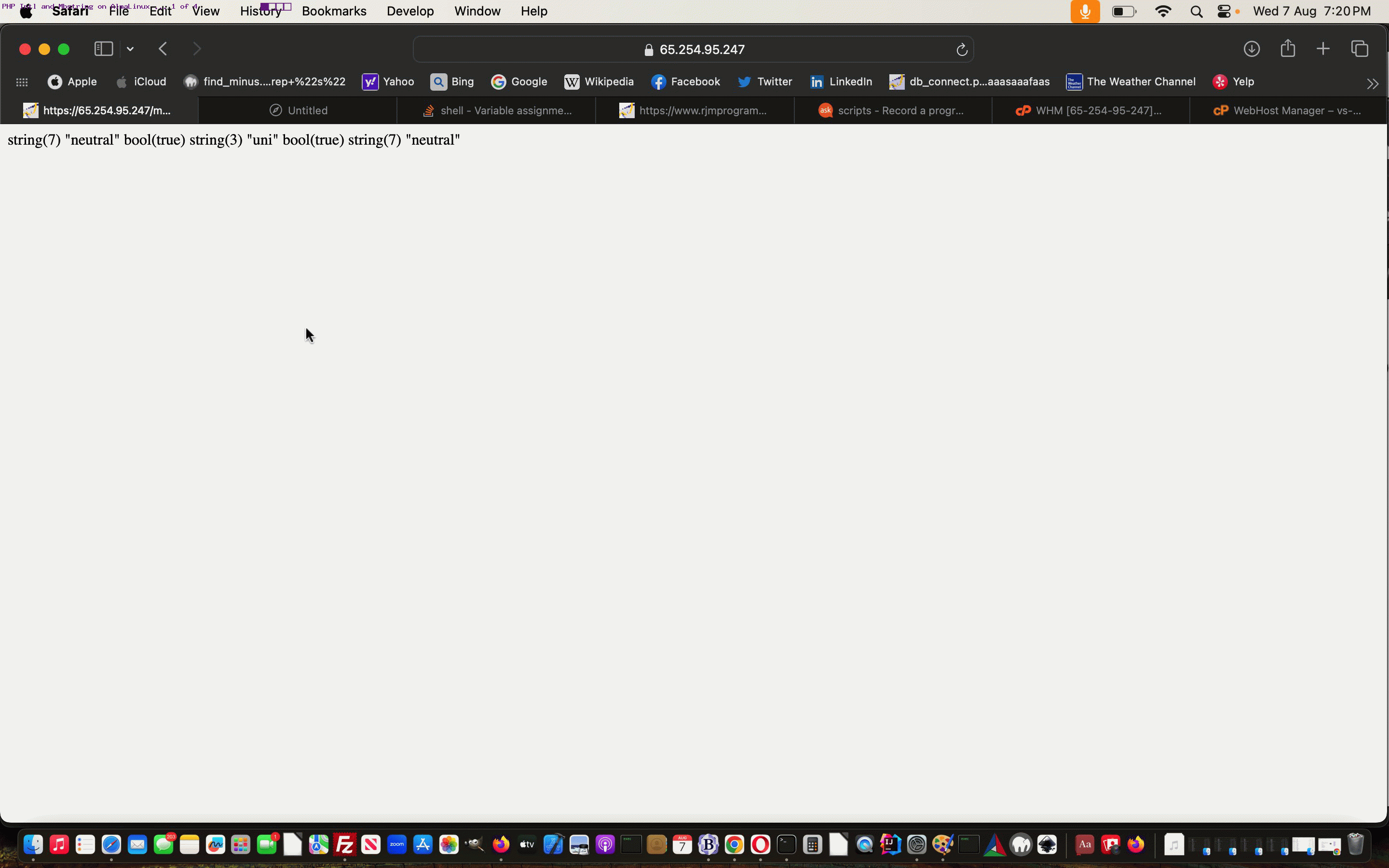
Previous relevant PHP Mbstring Multibyte String Primer Tutorial is shown below.
Our (Mac OS X laptop) local MAMP web server is an Apache/PHP/MySql web server. In this environment you can find out a lot with some PHP code as per …
<?php phpinfo(); ?>
… and if, in doing this, you find a reference to the “mbstring” Multibyte String Information functionality existing, you are a lucky candidate to introduce some internationalization code into your PHP code, for those occasions where the destination language uses a UTF-8 character set where individual characters can not be described by the ascii character set from decimal 0 to decimal 255. In other words, it takes more than one byte to describe each character of the language. There are many languages like this, a few being the Chinese languages, Japanese and Korean.
We followed a lot of the advice of the very useful link (thanks) to create some PHP called …
… where we show what we always suspected but were too shy to ask, and didn’t flesh it out before … doh! … you can’t split a Chinese phrase’s characters into their individual characters and expect those characters individually translated bring you back to the sense of the Chinese phrase to start with.
So we take the Chinese phrase 火车票 (which translates into English as “Train tickets” … and we thank Google Translate for help with all this) and use PHP mbstring’s mb_str_split to properly split the Chinese into its constituent multibyte (UTF-8) characters (and along the way, show that PHP str_split messes up this same task, as you’d probably guess would happen), and then translate all these into English using Google Translate, as an intellectual exercise.
If this exercise makes you …
- a) fall on the floor laughing
- b) hit a gong with a huge hammer
- c) cook up some deep fried dumplings
- d) put the left chopstick in the right ear and the right chopstick in the left ear (please ask for adult supervision) … translation: do not do this
- e) while reading you sweep the cat under the rug (no animals were harmed in the making of this blog posting)
… then we’re here to tell you that you need to take a Bex and have a lie down.
We are just showing in PHP that if the mbstring functionality is available to you, that the mbstring library of functionality can help with some Internationalization issues you may be grappling with and that this PHP code you could try via this live run link.
If this was interesting you may be interested in this too.
If this was interesting you may be interested in this too.
If this was interesting you may be interested in this too.
If this was interesting you may be interested in this too.
If this was interesting you may be interested in this too.
If this was interesting you may be interested in this too.
If this was interesting you may be interested in this too.
If this was interesting you may be interested in this too.
If this was interesting you may be interested in this too.

